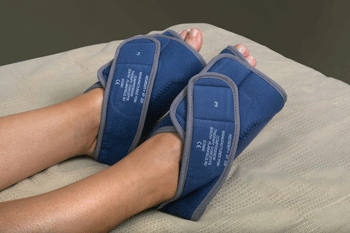General Arthoplasty Concern
Arthroplasties are planned surgical interventions that address a specific and often long-standing degenerative condition.
However, a planned surgery does not obviate a smooth and easy recovery. An arthroplasty results in substantial trauma surrounding body tissues and body systems may be slow to recover from the operation.
Muscles spasm and guard, there is bruising from the use of surgical spreaders and vascular trauma. Edema is very significant, and patients will move with an effort to protect the affected side.
Bones are remodeling in much the same as they do following a fracture. The joint capsule and many ligaments are recovering from a significant stretch during the surgical dislocation and prosthesis placement.
Expect to apply similar approaches and attention to pain management as you would with an unplanned, traumatic bone and joint injury that requires surgical repair.
I want to highlight again don't get too bogged down in all the surgical details. Apply your kinesiology knowledge of involved structures to learn (not memorize) the "why" behind the precautions.
Be sure you can reflect on how you know what you know (applied knowledge, evidence, patient feedback).
You will never be asked to weigh in or recommend prosthetic components or surgical approaches (and if you are, be sure you recall your scope of practice before responding).
Focus on:
- any immediate SAFETY ELEMENTS, especially in the early rehab stages,
- APPLYING knowledge of tissue healing in progressing activity,
- EDUCATING the patient in how to move and exercise safely,
- OBSERVING and INTERPRETING patient performance and providing appropriate feedback
- PROMOTING patient adherence through effective and patient-centered MOTIVATION
- COMMUNICATING and COLLABORATING with the supervising PT any unexpected responses or outcomes
The single greatest predictor of recovered functional level/activity level following arthroplasty is pre-surgical functional/activity level.
This finding has been consistent across short-term and long-term follow-up studies. This highlights the importance of advocating for more therapy services pre-surgery to maximize functional recovery post-surgery. It also brings up a challenge to encourage patients to seek more than pain relief as an outcome of the surgery. Promoting positive health behaviors prior to and following surgery is an essential component to improving quality of life.
Practical Prevention Tips
Patients with acute, post-operative hip conditions should be instruction and receive reinforced instruction and practice in DVT and pulmonary embolus prevention
- use of incentive spirometer frequently during day
- use of sequential pumps while in hospital (types will vary)

- active ROM in ankles (pumps, circles), and isometric LE exercises
- positioning and repositioning for skin and contracture management and post-operative motion precautions
- absolute adherence to post-operative motion and WB precautions